Galloo Island Lore & History
Despite its remote setting, Galloo has been witness to some of the most historic chapters of American history..

First European on Galloo Island
Explorer Samuel de Champlain may have been the first European to set foot on Galloo Island. Exploring the eastern shore of Lake Ontario in 1615, he likely sailed along the Isle de Gallots or pebble-strewn shores. New England Yankees and Scotsmen later settled on Galloo Island to harvest its abundant cedar trees for shingles used for roofing and siding in homes on the mainland.
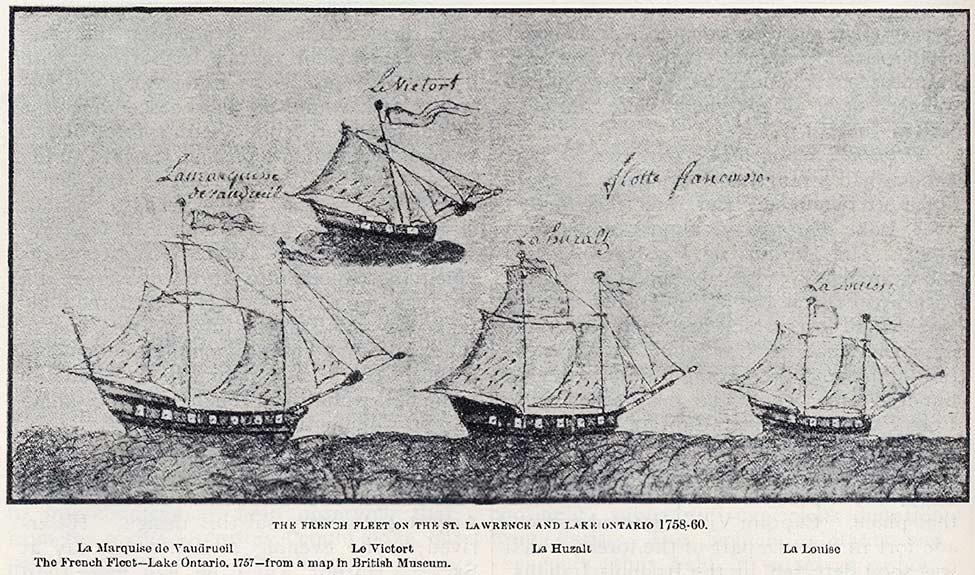
French and Indian War
Galloo has been witness to some of the most historic chapters in American history. During the French and Indian War, the Saint Lawrence River and Lake Ontario were key theaters for British and French forces.
War of 1812
During the War of 1812, the Royal Navy was sparring with the frigates of the US Navy in the Saint Lawrence River and Lake Ontario. Nearby Sackets Harbor became Great Lakes headquarters for the US Navy, and its shipyard employed thousands.

The Lighthouse
In 1819, Congress authorized $12,500 to fund the construction of the Galloo Island lighthouse. It was installed on the western tip of the island in 1820 and was automated in 1963. The lighthouse is currently owned by the NYSDEC (New York State Dept of Environmental Conservation). It was the first American lighthouse built on Lake Ontario.
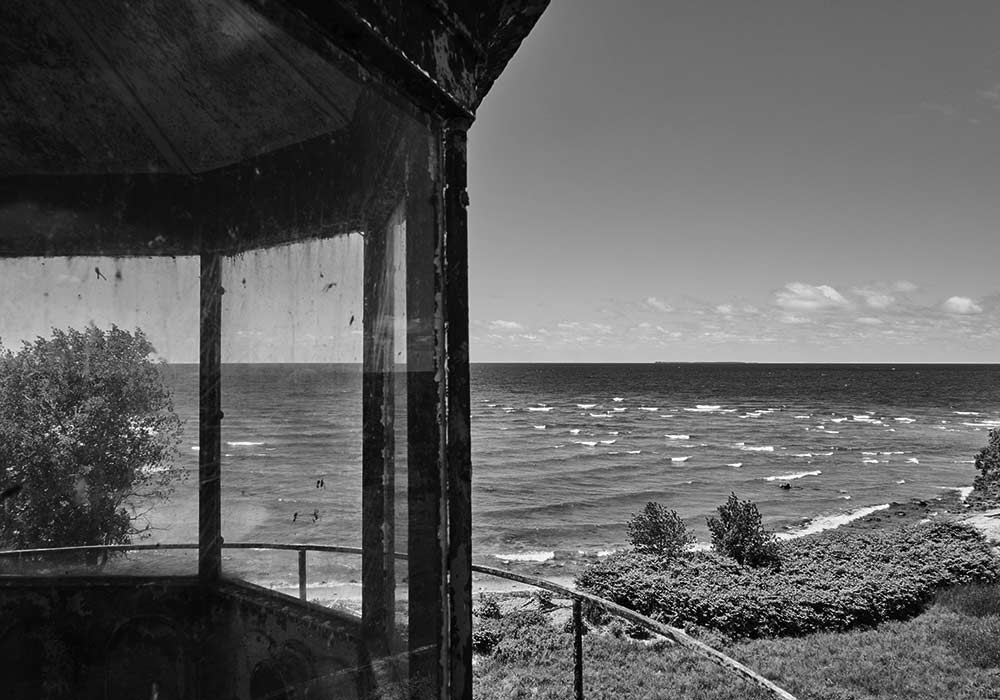
Tower Repairs
A Fresnel lens was installed in the tower, which was noted by the Lighthouse Board in 1864 to be in need of “various and extensive repairs and renovations.” The Board submitted an estimate of the necessary work, and on April 7, 1866, Congress responded with an appropriation of $15,000 for “repairs and renovations.”
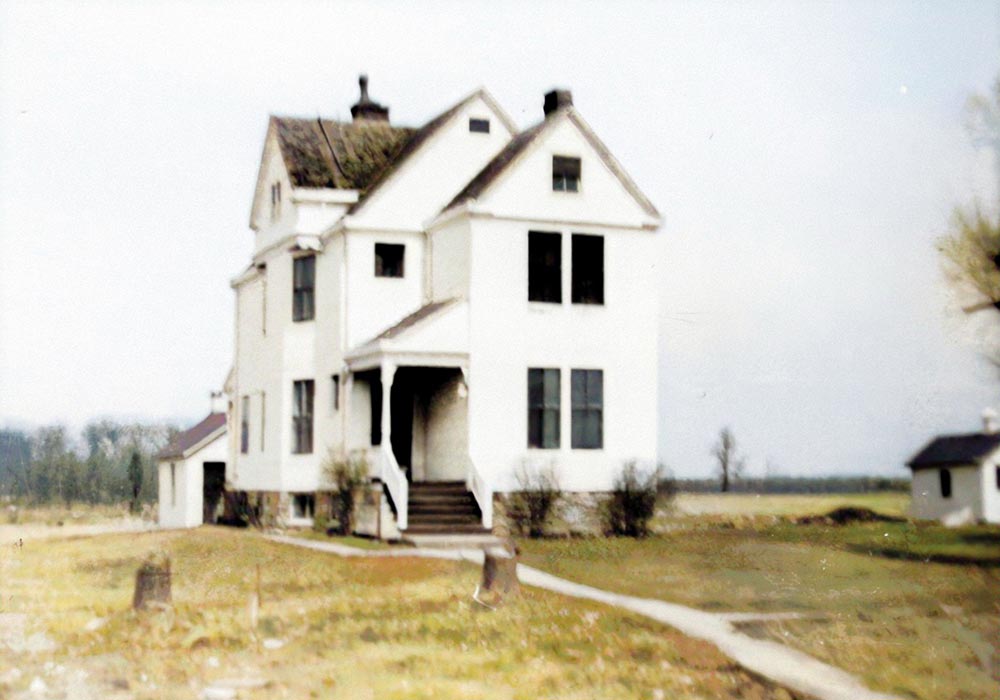
New Structures
Work on a 60-foot tower and dwelling began and was completed the following year. Gray limestone, quarried on the island, was used to build the new structures, which were linked by a covered passageway. Theo Stevens, the head keeper, moved into the new residence, while the old dwelling was retained for an assistant, a position which was added to the station in 1867.
Island Life
80 people were living on Galloo Island in the late 1800s with two sawmills, a schoolhouse, and more than one thousand sheep.
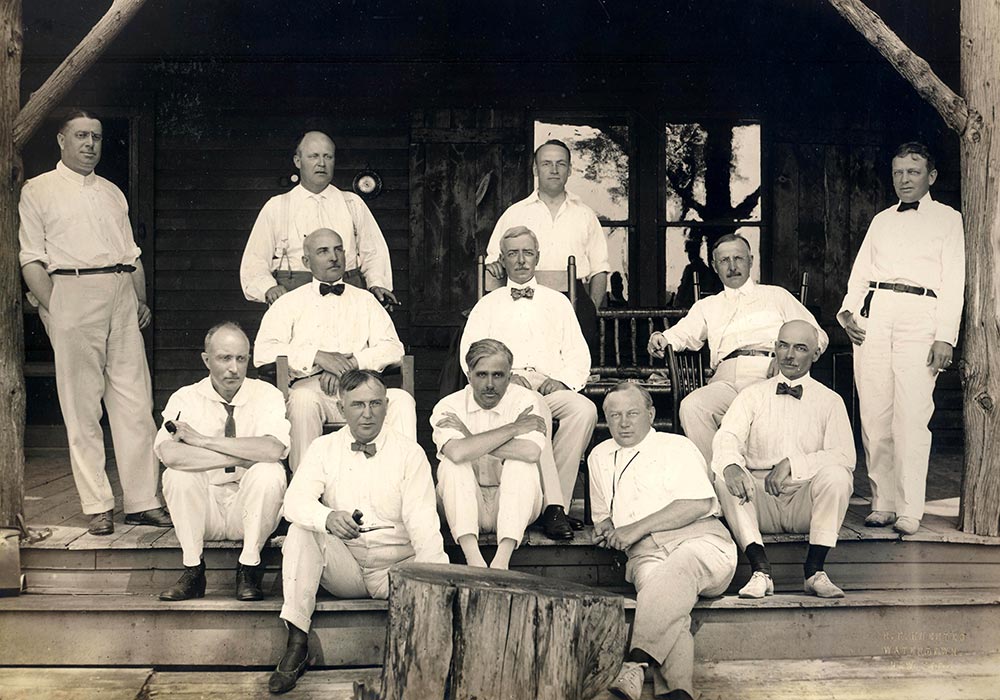
The Galloo Island Fortnightly Club
The Galloo Island Fortnightly Club, or P-K Fishing Club, was formed in the late 1800s. This invitation-only club catered to a gentlemanly sort that celebrated the outdoors lifestyle found on Galloo. The organization can be traced back to Woodrow Wilson’s secretary of state, Robert Lansing (1864 – 1928), a native of Watertown, New York. Lansing wasn’t the only big shot to belong to the club. His father-in-law happened to be President Benjamin Harrison’s secretary of state, John Foster (1836 – 1917). His nephews included two of America’s leading Cold Warriors: Secretary of State John Foster Dulles (1888 – 1959), who served under Dwight Eisenhower; and CIA Director Allen Dulles (1893 – 1969), who also served under Ike. Countless other prominent politicos were members, including Judge Nicholas Yost of Watertown, whose son Charles would go on to become the ninth US Ambassador to the United Nations. Clearly, this was no ordinary gathering.
Scarlet Fever
In the winter of 1881-82, an epidemic of scarlet fever swept the island. A doctor on the mainland drove over the ice every day for three weeks to treat the victims.
a new identity
“Galloo Island” was officially given its name by Governor DeWitt Clinton.
"Old Jake"
North Pond, a big, shallow bay on the northwest end of Galloo, was the home for many years of an Iroquois known as “Old Jake”. He had a cabin at the entrance to the bay and trapped, fished, made baskets, and lived a pleasant life with his fellow islanders. Quiet, that is, until he took on a little too much firewater. Then the Iroquois would remember that Nelson Wattam’s mother was a Huron. So, he went on the warpath against his ancient enemy. That meant a half-mile stagger across the island. If “Old Jake” made it as far as Nelson’s, he was usually easily talked into smoking a peace pipe before being carried back to his cabin.
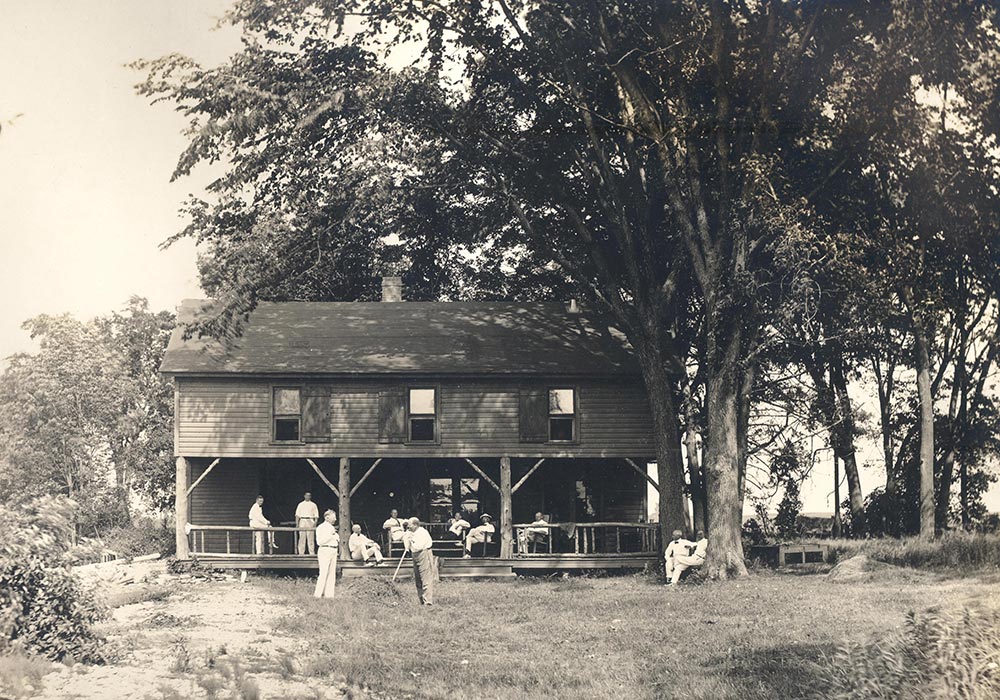
Fishing Cottages
Fishing Cottages were built around North Pond on the island along with the Fortnightly Club Fishing Lodge, co-established in 1908 by Robert Lansing, US Secretary of State from 1915-1920.
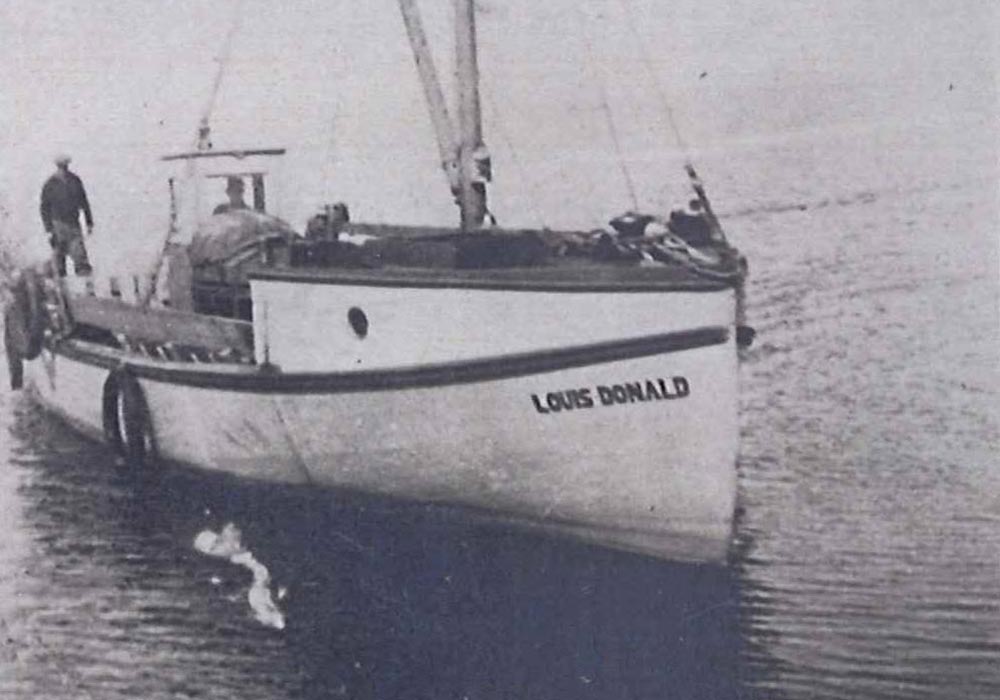
To the Rescue
Lighthouse keeper Graves and Assistant Keeper Frazier went to the assistance of the disabled powerboat Louis Donald, which was carrying a cargo of 10,500,000 minnows, and towed it back to the island. The keepers housed and fed the four men aboard the vessel for four days while they made repairs to their engine. This wasn’t the only assistance Keeper Graves rendered during his twenty-seven years on Galloo Island. He was recognized in 1914 for towing a launch four miles to get fuel, but his most courageous rescue came a year later when a father and son aboard a newly purchased motorboat encountered a squall near the island. The storm, coupled with a leak in the hull, soon overpowered the boat’s pumps, and the motor stopped, leaving the pair to drift helplessly before the storm.
Prohibition Era
During the long, thirsty years of the Prohibition Era, Galloo was a way station for rumrunners spiriting hooch across the lake from Canadian distilleries.

Lighthouse Updates
An air diaphone replaced the old steam whistle on the lighthouse, and the following year, the light was electrified and its characteristic changed to a group of three flashes every twelve seconds.

Storm Damage
The life saving station at Big Sandy Creek on the mainland was damaged by storms. Therefore, a new life saving station was built on Galloo Island to better position surfmen for rescues among recreational boaters on Lake Ontario.
Keeper Graves Retires
Robert Graves retired after forty years of government service and after having overseen the modernization of the station.
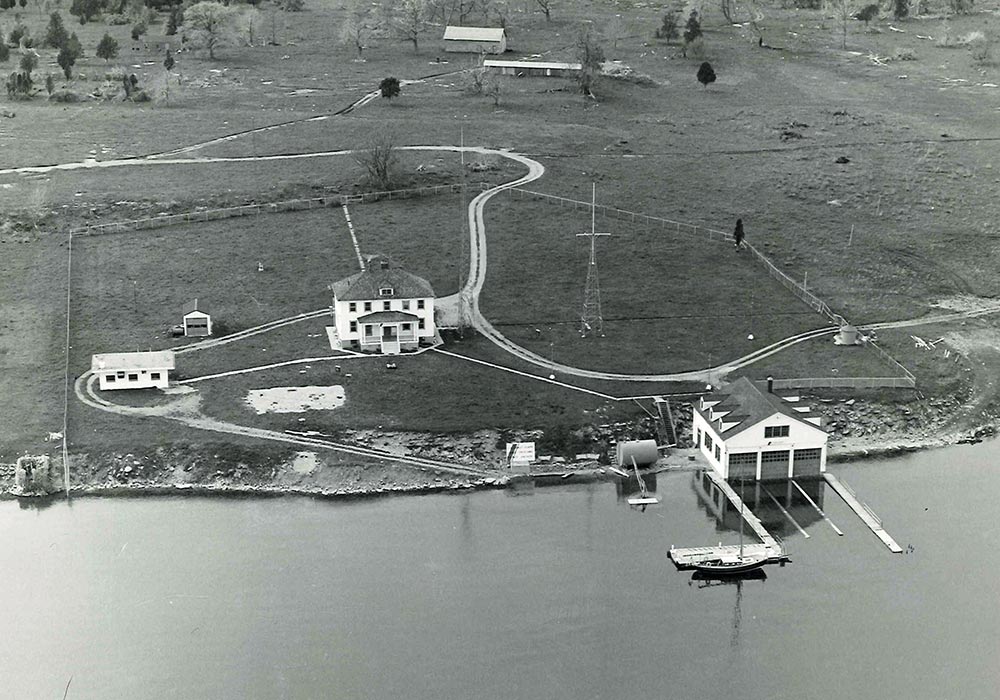
U.S. Coast Guard Station
The Galloo Island Coast Guard Station was built on the East side of the island in 1936 with the final construction of the facilities in 1939. It was later abandoned in 1973 and is currently owned by NYSDEC.
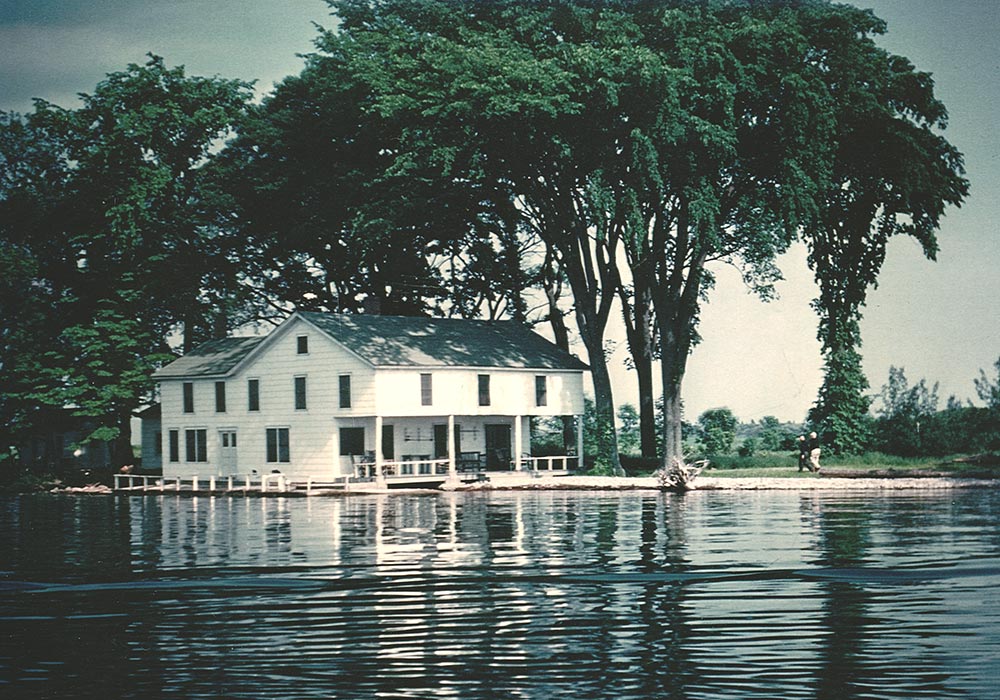
Fortnightly Clubhouse Sold
The H.E. Machold family of Ellisburg, NY purchased the Fortnightly Clubhouse on North Pond for a private retreat from their many duties as organizers of the Niagara-Hudson Power Company, later, Niagara Mohawk Power Corporation (National Grid). They made many improvements to the clubhouse before selling it to Watertown, NY businessman Larry Smith in 1966. The clubhouse has remained in private ownership since then.
New Faces on the Island
Coast Guard Officer Warren Leifer and his wife Doris were sent to Galloo Island Lighthouse.
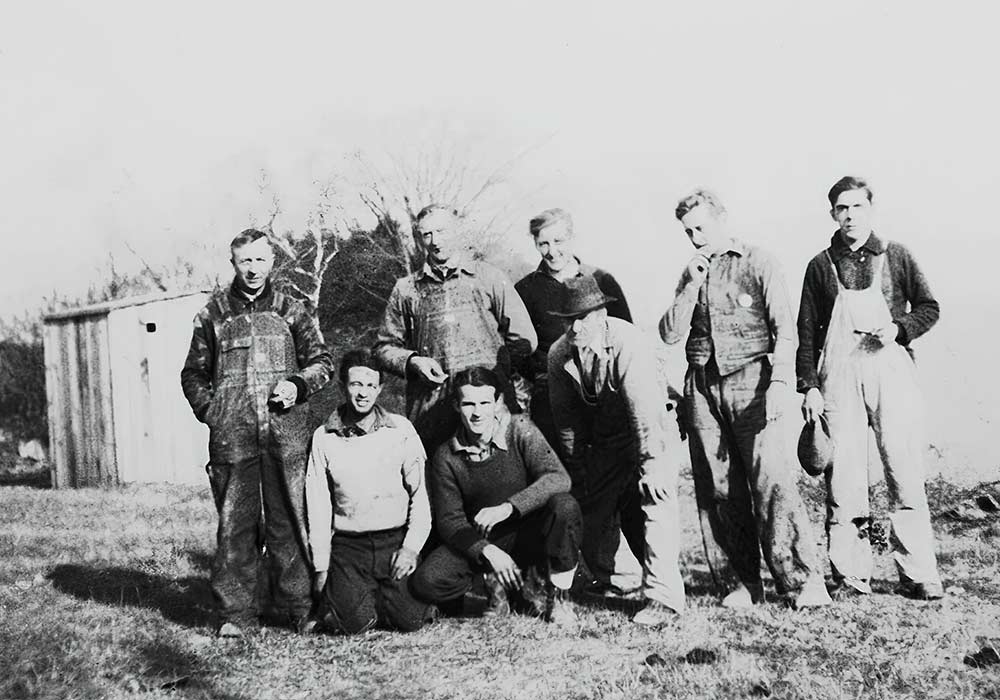
Ontario Stock Farm
Much of the land on Galloo Island was used for sheep farming as The Ontario Stock Farm. Former Galloo Coast Guard commander Charles W. Fitzpatrick and his wife, Jan, owned and farmed the island for 21 years.
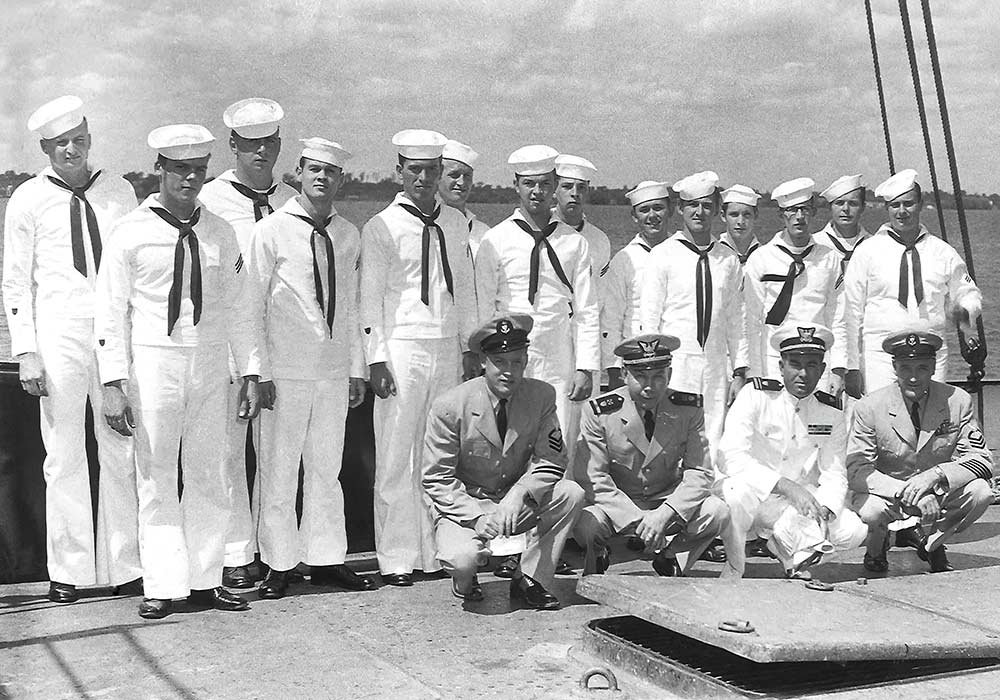
Coast Guard Station Disestablished
The Coast Guard / Life-Saving station was disestablished due to a lack of search and rescue cases over the years. Responsibilities were taken over by the Coast Guard stations in Oswego and Alexandria Bay.
A Part of History
The Galloo Island lighthouse was added to the National Register of Historic Places.
Galloo becomes special place for Patten Family
Patten Realty went public on the New York Stock Exchange and was rechristened Bluegreen Corporation. One of its land holdings, Galloo Island, became a special place for Mike Patten and his family. Despite his best attempts, it got away.

Galloo Island goes on the Market
The larger privately held parcel on Galloo Island was also on the market in 2007, for an asking price of $12,750,000. The property, which included an airstrip, seven-bedroom lodge, guest house, and log home, had previously been available for seasonal rentals at a weekly rate of $19,500.

The Patten's Reclaim Galloo
Persistence pays off. The Patten family and friends become the new stewards of Galloo Island.
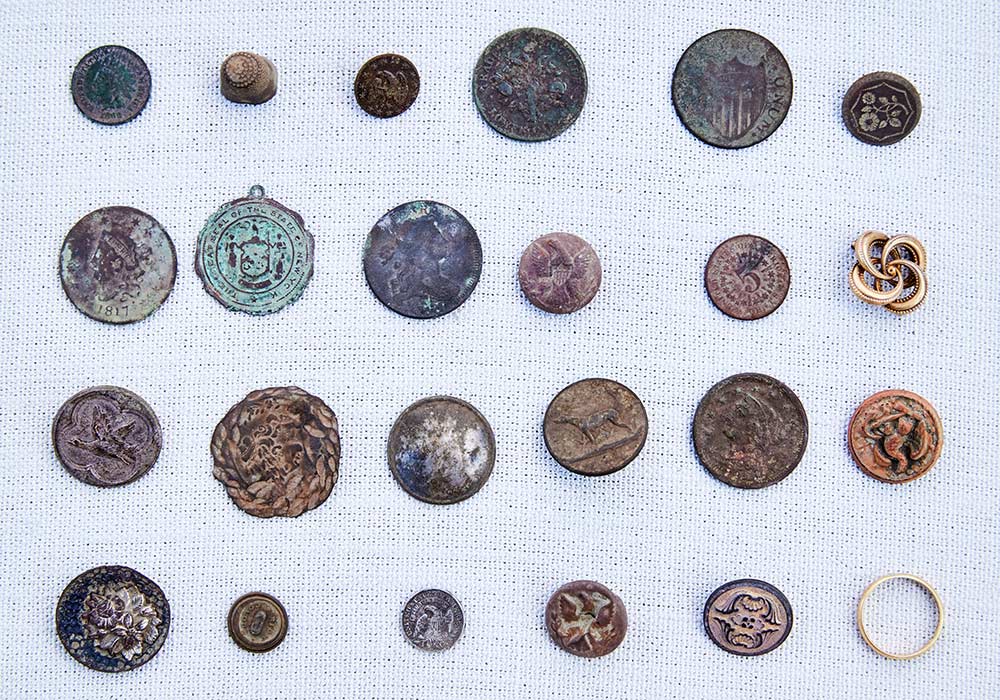
Sunken Treasure
While on one of her commutes to the island, longtime caretaker Roxanne Grant noticed what appeared to be the remnants of sunken wreckage along a shoal just off Galloo Island. Tim Caza, a US Coast Guard captain and active scuba diver along with his partner Dennis Gerber dove the site in June 2022. They confirmed it was a previously undiscovered double-masted daggerboard scow schooner like the ones that plied the Great Lakes in the early 1800s.
Connect with Us
For general inquiries, get in touch here
